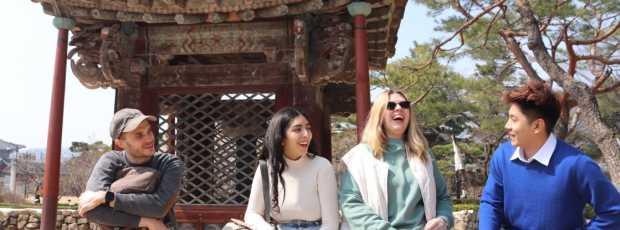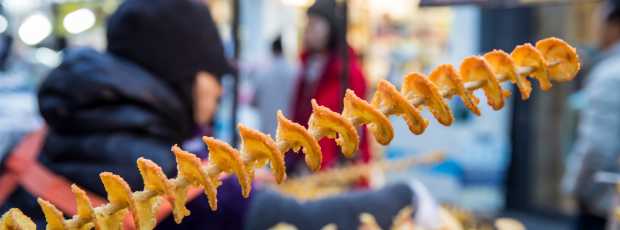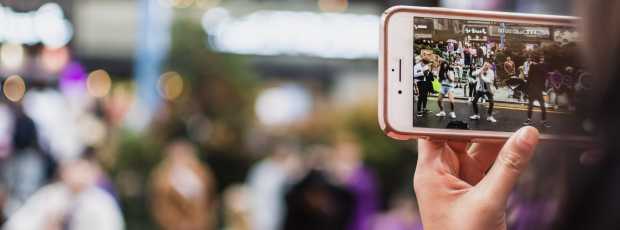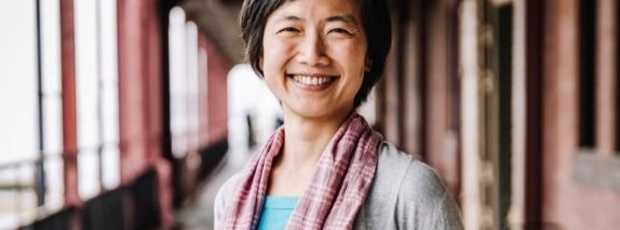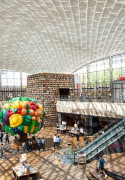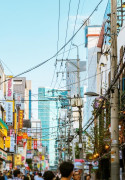It was a great overview of Seoul and the various landmarks around town. We got a wonderful overview of life in the city. Our guide, Hans, was great. He listened to our needs and was actually able to start the tour earlier than we had scheduled.Lynn, Seoul, 2025
Table Of Contents
- A Local's Must-See Places
- Overrated Seoul: What to Skip
- Where Locals Eat
- Seoul’s Leisure Culture
- Interest-Based Activities
- Seoul Neighborhoods Decoded
- Essential Practical Information
- Day Trips Worth Escaping Seoul For
- Frequently Asked Questions
- Why Seoul Is Best Experienced Beyond the Checklist
Seoul is a place where kimchi jjigae bubbles in basement restaurants at 3 AM while office towers gleam overhead, where centuries-old palace walls meet neon-lit shops.
It's also where everybody claims they know the best Korean fried chicken spot, but they're all wrong because it's in an alley behind Euljiro that doesn’t have a proper sign.
Hi, I'm Taeyang, I was born here, and I still walk this city very late when kimchi jjigae boils in basement kitchens under glass towers.
I won't give you the glossy version of Seoul experiences. I talk straight. No filter, no brochure sparkle.
This place works hard, drinks harder, and keeps centuries of habit running alongside a future that looks imported from next week. Let me show you how to enjoy everything on offer.
Experiences Created by Locals, Just for You
See the city through the eyes of the people who call it home.
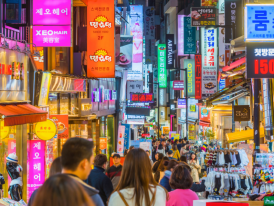
A busy neon-lit shopping street in Myeongdong City
I’m not going to sell you on “magical mornings” or “vibrant tapestries.” The city doesn’t need that marketing nonsense. It’s a place that works hard, drinks harder, and somehow manages to preserve centuries of Korean culture while building a future that looks like it came from a sci-fi film.
We’ve got palaces older than some countries’ parliaments standing next to department stores selling ₩3,000,000 handbags.
We eat fermented cabbage for breakfast and consider not drinking soju a personality flaw.
You want the real things to do in Seoul? I’ll give you what locals do, where we eat, and which tourist spots we roll our eyes at.
This isn’t your typical travel guide checklist. It’s the capital as it is; messy, beautiful, exhausting, exhilarating, and completely itself about all of it.
The best things to do in Seoul aren’t always pretty, but they’re always real. These tips come from living here, not visiting.
This isn’t a reconstructed theme park; it’s where kings made decisions that shaped Korea’s history.
A Local's Must-See Places
Not every famous spot is a trap; these few actually earn your ticket.
Gyeongbokgung Palace: Where History Breathes
Gyeongbokgung Palace (경복궁); yeah, it’s touristy, but there’s a reason.
This isn’t a reconstructed theme park; it’s where kings made decisions that shaped Korea’s history. Built in 1395, burned down, rebuilt, occupied, and restored, this palace has seen more drama than a K-drama.
The Japanese tore down most of it during the occupation, built their colonial HQ right in front just to be jerks. Now it’s back, and this one deserves the hype among all things to do in Seoul.
The entry fee is just ₩3,000; less than your morning latte.

People at Gyeongbokgung Palace in traditional clothing and onlookers enjoying the view
Be there around 9:30 on a weekday. Guard change hits 10 AM and 2 PM. Gyeonghoeru’s reflection is the postcard everyone elbows you for, but I walk on to Hyangwonjeong, a small pavilion on its own island where the tour groups get bored and wander off.
Ticket is ₩3,000. It takes about an hour if you move, three if you actually read things.

Island in Gyeongbokgung Palace with visitor enjoying the view
Travel Guides Can Only Take You So Far
We connect travelers with locals who shape days that actually fit your interests, not someone else’s checklist.
See how it works
Traditional Korean hanok houses in Bukchon Hanok Village
Bukchon Hanok Village: Living History
Bukchon Hanok Village (북촌 한옥마을) sits between two palaces, narrow alleys of traditional Korean houses with curved tile roofs, and glimpses of Seoul Tower in the distance.
Here’s the catch: most of the hanoks are from the 1920s and 30s, not 600 years old. Still, the architectural style goes back centuries, and the vibe is as authentic as it gets.
Walk it early in the morning or after 6 PM when the tour groups have gone. Bukchon-ro 5-gil has stunning views, and the side alleys hold the oldest surviving homes.
It’s a wonderful thing to see preserved hanoks still in use.
Just remember, it’s a residential area and real people live here, so keep voices down and selfie sticks out of people’s front doors.
Want to Experience Bukchon Hanok Firsthand?
Step into the neighborhood, scene, or story with someone who knows it inside out.

People walking the path in Namsan Park to Seoul Tower
Seoul Tower and Namsan Park
Every city has that one tower tourists feel obligated to visit. Seoul’s Namsan Tower is a 236-meter beacon sitting on Namsan Mountain.
The love lock fence is cheesy, but it’s become part of modern Seoul romance culture. On rare clear days, you might even glimpse as far as Kaesong in North Korea.
Skip the cable car. I walk it.
Forty minutes through Namsan Park on the northern route from Myeongdong, shaded and quiet enough to hear the city breathing.
Sunset is pretty. Late evening is better when the lights sprawl like a circuit board.

People relaxing by Cheonggyecheon Stream
Cheonggyecheon Stream and Han River
Cheonggyecheon Stream (청계천) is what happens when a city tears down a highway and puts a river back where it belongs.
Eleven kilometers of water cut through downtown. I start at Cheonggye Plaza and head east past old bridges and stone markers, feet in the water in July.
The Han River (한강) is Seoul’s living room.
Twelve parks line the banks; I drop a pin at Ttukseom, order fried chicken to the blanket, rent a convenience-store ramen cooker, and watch cyclists pretend they are not racing. Banpo’s rainbow fountain runs April to October, evenings, every twenty minutes.
Starfield Library and Seoul City Wall
Inside COEX Mall, Starfield Library is a book cathedral: 13-meter shelves stacked high under a glass roof. People act like they are reading. Really they are taking photos.
I sit ten minutes and move on.
The Seoul City Wall, 18.6 kilometers of stone built in 1396, once circled the whole city. The Seoul City Wall still wraps the city in pieces.
Naksan Park is the sweet spot, close to the center and kind to knees. Give it a half day and touch stone that pre-dates your country while looking at apartments that got built last year.

People bustling at Starfield Library with it's massive bookshelves
Too Many Lists, Not Enough Clarity?
We make exploring simple by connecting you with someone who knows the city and helps you spend your time on what matters to you.Overrated Seoul: What to Skip
Save your won and your patience; here is what I skip and why.
Myeongdong and Cable Cars
Myeongdong is skincare and markups. Street food that should cost ₩3,000 gets sold for ₩15,000. If you need products, go to any other Olive Young and save your money.
Same story with cable cars.
The Namsan Cable Car is ₩14,000 for a ride that skips a perfectly decent walk. I keep the cash and take the stairs. You get shrines, springs, and views the gondola never shows you.

An Olive Young Skincare store in Gangnam, for all your Korean skincare needs
Gangnam’s Premium Everything
Gangnam is Seoul’s Beverly Hills; plastic surgery clinics, K-pop agency buildings, and coffee shops charging double for the same latte.
Sure, it’s flashy, but unless you’re here to shop luxury or people-watch, it’s mostly skippable.
That said, there are two exceptions I defend: Seonjeongneung Royal Tombs (선정릉) (a UNESCO site hidden between skyscrapers) and Garosu-gil, where Seoul’s trendsetters drink overpriced wine.
Otherwise, Gangnam is better avoided in favor of the Seoul neighborhoods with more soul.

A calm day at the Seonjeongneung Royal Tombs
Go Beyond the Seoul Checklist
Discover the city guidebooks don’t cover with a local by your side.
Where Locals Eat
Where we end up at midnight when we want dinner, not a photo.
Heritage Restaurants
At Andongjang (안동장), it’s still 1948: wood panels, bow-tied waiters, and a fiery oyster jjamppong that earned it Seoul Future Heritage status.
The oysters come from Tongyeong, the broth could strip paint, and we locals wouldn’t want it any other way. This is Seoul, what to eat, regardless of your state of inebriation.
I go when the weather is unfair or when I deserve it.
Cheongjinok (청진옥) has been Seoul’s unofficial hangover clinic since 1937. Their haejangguk looks murky but works miracles.
The ajummas serving it have seen every kind of hangover and judge none of them. Cash only, no English menu, and it’s perfect that way.

Haejangguk "hangover soup" from Cheongjinok
Euljiro Nogari Alley
Forget craft cocktails. Euljiro Nogari Alley (을지로 노가리 골목) is the capital stripped to drinking essentials: plastic stools, dried pollack, draft beer that costs less than a subway line ride.
By day, printing shops. By night, where the city drinks without pretense. Nogari gets torn by hand, beer disappears, someone orders round two before you finish round one.
Hungry to Try Seoul's Food Yourself?
Taste and explore the flavors locals actually love.

Nighttime vibes in Euljiro Nogari Alley
Seoul’s Leisure Culture
How the city actually relaxes, river blankets, convenience store tables, slow walks, small rituals.
Han River Rituals
When the city needs to take a breather, it heads to the Han River.
Delivery apps deliver chicken and beer to your picnic blanket. Convenience stores lend you ramen cookers.
There are cherry blossoms in spring, fireworks in autumn, and joggers and strollers year-round.
Convenience Store Society
Convenience stores are neutral ground. Buy anything, claim a plastic table, and talk until the clerk starts mopping around your feet.
Students cram, couples split ice cream, strangers trade lighters and life advice. Beers are ₩1,500 and better than they need to be at 1 AM.

Friends having a fried chicken picnic next to the Han River
Photo Booths and Retro Arcades
The “insaeng 4-cut” photo booth craze has taken over. ₩4,000 for four shots, and you walk away with a strip of your best or worst faces.
Add in late-night arcades, basketball hoops, claw machines, button-mash classics, and you’ve got a night out that feels more Seoul than any club.

A busy retro arcade with old-school arcade machines
Mullae Art Village
Once an industrial steel zone, Mullae now hums with artist studios, indie cafés, and street art layered on corrugated shutters.
Tourist blogs are catching on, but it’s still rough around the edges and alive with local energy.
Don’t go looking for perfection; go for the grit.
Interest-Based Activities
Pick your obsession, art, outdoors, shopping, and I will point you to the good stuff.
Arts and Culture
The National Museum has 220,000 artifacts and is free to enter. But the capital's art scene lives in smaller spaces. Art galleries in Samcheong-dong occupy converted hanoks.
Ihwa Mural Village gets called one of those "Seoul hidden gems"; it's not hidden, but the murals are legitimately good. The fish stairway everyone photographs is fine, but real art is in the alleys.

A wall Ihwa Mural Village painted with a mural of a small town while people pass by
Outdoor Seoul
Beyond the obvious mountains, Naksan Park, Seoul, at night, when the elderly do tai chi.
Fortress wall sections nobody hikes. Cycling the Han River requires strategy: rent at Mangwon, not Yeouido.
Go upstream toward Paldang Dam, where the path empties. Seoul Forest: deer you can feed, butterflies, and enough space to forget you're in a city of 9.7 million.
Curious What You Won’t Find Online About Seoul?
Discover the side only locals talk about.

People practicing tai chi at an outdoor square
Shopping and Nightlife
COEX Mall and Namdaemun Market are obvious choices. But Ikseon-dong (익선동) went from quiet hanoks to boutiques in about five minutes. Buildings are real, prices are modern.
You will get lost, find a bar, get more lost, and come out lighter by ₩50,000 with photos that look like everyone else’s. I go weekday afternoons if I go at all.

Bustling Namdaemun Market with rows of clothes
Nightlife peaks in unexpected places. Eulji-ro's (을지로) hip-hop bars in former printing shops. Live music exists beyond K-pop; Hongdae's back alleys, where bands play to twenty people.
The best nights end at Seoul Station, waiting for the first subway line at 5:30 AM.
Seoul Neighborhoods Decoded
Match the neighborhood to your mood and Seoul stops fighting you.
Hongdae and Ikseon-dong
Hongdae is youth culture ground zero; buskers compete for attention like it's the Hunger Games with guitars, dance crews battle for territory marked by boom boxes and chalk circles, and everyone aged 18-25 in Seoul somehow squeezes into ten blocks that smell like beer, hormones, and bad decisions.
Friday nights are mayhem. Saturday nights are mayhem with more tourists.
The main strips are chain stores now; the same shops you'll find in Myeongdong, Gangnam, and probably your hometown mall.
But the side alleys still have the weird stuff; vinyl bars run by guys who will judge your music taste, underground clubs where the floor is literally underground and possibly illegal, shops selling things you didn't know existed and aren't sure should.

A calm night in an Ikseon-dong alleyway
Ikseon-dong (익선동) materialized from nowhere around 2017; one day, it was elderly residents complaining about the price of cabbage and repair shops fixing things that should've been thrown away in 1987, the next day, every building had Edison bulbs, succulents, and sold ₩12,000 lattes served in mason jars by baristas with architecture degrees.
Seoul's most Instagrammed neighborhood, tells you everything you need to know.
The hanoks are real (mostly), the prices aren't. The alleys are a maze; you will get lost, find a bar, get more lost, find another bar, eventually emerge somewhere near where you started, but ₩50,000 poorer.
Go on weekday afternoons when influencers are elsewhere ruining some other authentic neighborhood.
Hongdae Is Not Just a Place on a List
Experience it through hidden corners and stories most visitors miss.
Gangnam to Jongno
Gangnam is new money where luxury is the default. Entertainment companies for K-pop stalking (don't).
Plastic surgery clinics outnumber coffee shops. Skip unless you want to see the 1% in their habitat.
Jongno is old Seoul, holding on. Jogyesa Temple sits between office buildings.
Back streets have the last traditional shops, paper makers, and hanbok tailors. Find second-floor tea houses where time stopped in 1975.

Jogyesa Temple courtyard decorated with colorful lanterns
Itaewon and Emerging Areas
Itaewon: the main drag is global food and tourist bars. Hills hide Haebangchon's artistic crowd, Gyeongnidan's cafes. International restaurants are run by immigrants.
Weekend nights are messy but real.
Seongsu-dong has Brooklyn vibes; former shoe factories turned into coffee shops. Yeonnam-dong is Hongdae, overflowing with better restaurants and fewer drunk students.
The Gyeongui Line Book Street, an old rail line turned park with indie bookshops.
Essential Practical Information
The unsexy details that save time, money, and arguments on the sidewalk.
Transportation
Get a T-Money card immediately. Not tomorrow morning, not after your first Instagram post; get it the moment you land.
This plastic rectangle is your key to the city. It works on every subway line, every bus, taxi, and even convenience stores when you need that 2 AM ramyeon fix.
Load it with ₩50,000 and stop thinking about transport. Essential travel tips for visitors who don't want to look like tourists fumbling with cash at the turnstile while angry commuters pile up behind them.

AREX express train stopped at Incheon Airport platform with travellers coming and going
The airport railroad connects Incheon to Seoul Station: 43 minutes on the express for ₩9,500, or take the all-stop train for ₩4,950 if you're patient and poor. The express has assigned seats and luggage racks.
The regular train has neither, but you save enough for two beers. Choose wisely.
Buses are harder; destination names are in Korean, routes follow logic known only to urban planners and possibly shamans, and drivers treat stop requests as suggestions.
But they go places subways don't, and the late-night buses (prefix N) run until 4 AM when you've missed the last train because "just one more drink" turned into seven.
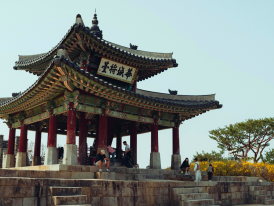
People relaxing and enjoying the sunshine at Suwon Hwaseong Fortress
Day Trips Worth Escaping Seoul For
Sometimes Seoul’s noise gets too loud, even for those of us who love it. That’s when you get out for a day and come back, reminded why you live here.
If you’re planning a couple of Seoul day trips, these two should be at the top of your list.
Take the train east to Suwon: home of Hwaseong Fortress, a UNESCO site where 18th-century walls still wrap around a living city.
Forget the bus tours; walk the ramparts at sunset when locals are out jogging and the floodlights turn the gates into something cinematic. Bonus: Suwon galbi (beef ribs) is its own religion.

Incheon’s Chinatown entrance
Or head west to Incheon’s Chinatown and Wolmido. Incheon is less than an hour by subway, but it feels like another world.
You’ve got Korea’s only official Chinatown with red gates, dumpling shops, and walls painted with Journey to the West murals. Walk it off at Wolmido boardwalk, where old-school arcades, seafood stalls, and salty air remind you Korea’s still a peninsula, not just a capital. It’s chaotic, colorful, and refreshingly low on selfie-stick battalions.
Safety and Etiquette
The capital is stupidly safe. Women walk alone at night, and kids take the subway solo. North Korea? That's a separate matter. We've been technically at war for 70 years.
The biggest threat from the DMZ tour is boredom.
Take your shoes off indoors. Don't tip. Pour drinks for others first.
Use two hands when receiving from elders. Naver Map works better than Google Maps here; Google Maps can't access Korean mapping data properly.
Cards are accepted at most places, but street food and older restaurants want cash.
Wish You Could Just Ask a Local?
Book a quick video call and get insider answers to your trip questions.
Frequently Asked Questions
1) What are the best things to do in Seoul at night?
Han River until 2 AM with chicken delivery. Dongdaemun Design Plaza's LED rose garden. Night hiking on Namsan. Or just convenience store culture; the real social scene. Essential things to do in Seoul happen after dark.
2) Where can I try authentic Korean BBQ?
Skip tourist areas with picture menus. Find second-floor restaurants in Jongno where smoke stains the ceiling. No English menu means good meat. Genuine Korean BBQ is one of those things to do in Seoul you can't fake.
3) Which palace offers free entry?
Gyeonghuigung Palace and Changdeokgung Palace's outside grounds have free entry. But palace entry fee amounts are like ₩3,000; less than a coffee. Budget activities exist everywhere.
4) How do I reach central Seoul from the airport?
Airport Railroad Express to Seoul Station: 43 minutes, ₩9,500. To reach central Seoul, the train is the simplest.
5) When should I visit Bukchon Hanok Village?
Before 9 AM or after 6 PM. Midday is tourist hell. Early morning has residents starting their day, evening light hits roofs perfectly. Timing matters for things to do in Seoul.
6) What's worth buying?
Korean skincare from Olive Young, not Myeongdong. Gochugaru is from Namdaemun Market, not souvenir shops. Makgeolli is available from any convenience store. Shopping is one of those things to do in Seoul that locals know better.
7) Where should I try street food?
Not Myeongdong. Gwangjang Market for bindaetteok. Namdaemun Market for hotteok. Or any subway station where ajummas sell tteokbokki. The best Korean street food has no Instagram presence.
8) Is the DMZ tour worth it?
If you're into Cold War history, sure. Otherwise, it's a long day of buses and gift shops. The DMZ tour is more interesting as a concept than an experience. There are better things to do in Seoul.
9) How do I use the subway?
Get a T-Money card. Tap in. Follow colors and numbers. Tap out. It's the world's most user-friendly subway line system. Master this first among things to do in Seoul.
10) Can I visit all royal palaces in one day?
If you hate yourself, you can visit Seoul's five royal palaces in one day. Pick two: Gyeongbokgung Palace for the main event and Changdeokgung Palace for the secret garden. Trying to see everything in an entire day leaves you exhausted.
11) Is Seoul expensive?
Street food costs about ₩3,000, restaurant meals around ₩8,000-15,000, coffee shop Americanos ₩4,000-6,000, and subway rides ₩1,250. Budget things to do in Seoul exist if you look.
12) Do I need to speak Korean?
No, not for tourist areas. It helps in real local life. Learning Hangul takes two hours and changes everything. Translation apps work; pointing works better.
13) What's uniquely Seoul?
Seoul is defined by its unique things to do: photo booth culture, delivery to Han River parks, 4 AM convenience store philosophy, ajummas in hiking gear, and love locks at towers.
14) Should I get a city pass?
No need. Most good stuff is cheap or free. Your T-Money card is the only pass you need for real things to do in Seoul.
15) Where can I see K-pop?
Entertainment companies in Gangnam (don't stalk). COEX Mall for events. But K-pop is more of a corporate product than an accessible culture. K-pop activities are mostly disappointing.
Why Seoul Is Best Experienced Beyond the Checklist
You can hit every palace, tick every market off your list, get every Instagram shot, and still miss the capital entirely.
The city lives in its routines: morning hikers on mountains wearing more gear than Everest climbers, evening crowds by the Han River pretending exercise is why they're there and not the chicken delivery, late-night convenience store congregations solving problems that seemed unsolvable before the third beer.
It's in subway line announcements that everyone knows by heart but still listens to, seasonal menu changes that everyone complains about but secretly loves, and unspoken rules about escalator sides and shoe removal that nobody teaches you but everybody knows.

Inside a Korean GS25 convenience store for all your shopping needs
Real things to do in Seoul aren't planned; they happen when you miss the last train and discover the city's 3 AM personality, when you accidentally order intestines thinking it was regular meat and realize you like it, when you find yourself defending kimchi to someone who called it "just spicy cabbage" and realize you've gone native.
I've walked these streets for 38 years.
Still find alleys I've never seen, restaurants that have been there since the war serving the same three dishes, stories nobody's telling tourists because they're too busy trying to sell them palace tickets.
South Korean experiences reward the wanderer, not the planner. It's better when you're slightly lost, definitely hungry, probably confused, and open to whatever happens next.
This city will exhaust you. The pace is relentless, the crowds are constant, the sensory assault of neon and K-pop and kimchi and soju never stops.
But it will also feed you at any hour, show you 600 years of history before lunch, and make you feel like you're living in tomorrow while standing in a palace from yesterday.
So forget the checklists. Get your T-Money card, pick a direction, and walk until something interesting happens. In Seoul, it always does.
More Seoul Reads
Ready to plan your perfect day in Seoul?
Start your experienceWhat If Exploring a City Felt More Personal?
City Unscripted pairs you with someone who lives there, so you can see iconic sights and hidden corners in a way that feels like yours.
Wish you had a local friend in Seoul?
One who knows the city inside out and could plan a private day just for you? Our local hosts do exactly that: no scripts, no tourist traps, just the side of the city most people miss.






